You’ve found an investor who sees the potential in your company and wishes to invest, however they will only do so if they can benefit from valuable tax reliefs via Seed Enterprise Investment Scheme (“SEIS”) or Enterprise Investment Scheme (“EIS”).
Unless you’ve been involved in these schemes before, you’re probably wondering what this means and what your company needs to do.
Put simply, these schemes are designed to help your company raise money by offering tax reliefs to individual investors who buy new shares. Generally, SEIS is for newer companies just starting out whereas EIS is for the growth phase of a business. Both reliefs are valuable to investors and whilst SEIS attracts higher tax reliefs than EIS, EIS allows significantly higher investment which reflects the stage of the company’s growth.
In brief, these tax-favoured investments offer income tax and capital gains tax benefits for the investor, but only if all of the qualifying criteria for both investor and investee company are met.
Risk Areas
Sounds relatively straightforward right? So, what could possibly go wrong?
The short answer to this is very easy, lots!
There are various areas which need to be considered to check if an investment will qualify for tax relief. Some relate to the date of investment, whilst others continue during the investment period. Often different investment opportunities will also bring their own nuances which mean they need to be carefully thought through to ensure they don’t get caught by the rules detailed in the tax legislation.
If there is one thing worse than not qualifying for tax relief on an investment, it is having tax relief subsequently withdrawn! Below is an overview of some of the areas where issues can arise and things to avoid to ensure your investors stay happy.
Cash received and shares issued
Payment must be made before shares are issued. This is an absolute must. However, if there are several investors then cash is not always received at the same time. Often companies want to wait for all payments to be made before issuing shares on the same date. This approach is sensible as means only one compliance statement (SEIS1 or EIS1) needs to be completed and submitted to HMRC.
BUT if the gap between when payment is made and shares issued is too long, HMRC could successfully argue that the payment was a loan and not for equity. This in turn means the payment wouldn’t qualify for SEIS / EIS tax relief.
An investor wants to become a director
The rules are slightly different under SEIS and EIS.
Under SEIS, an investor can also be a director and receive reasonable remuneration for director duties, but care still needs to be taken if this is in point.
However under EIS, whilst an investor can be a director, they need to meet strict conditions:
- The investor director must be unpaid. They can receive what are termed as “qualifying payments”, but these are limited in nature and carry their own conditions; or
- They must be unconnected with the company at the time of making the investment. This means that becoming an investor should take place on a different day to becoming a director. After investing, they can receive reasonable commercial remuneration.
Note, director rules are different to employee rules! There are no circumstances in which an employee would qualify for SEIS/EIS unless they are also a director as this would then overrule the employee status for these purposes.
Investment used for qualifying purpose
Funds must be used for a qualifying purpose within a qualifying timeframe, typically within 2 years. If not, SEIS/EIS status will be withdrawn and tax relief will be clawed back from the investor on their entire investment, not just the element that wasn’t spent on a qualifying purpose in a qualifying timeframe.
If investment funds are added to the company’s normal trading bank account which receives trading income and pays for everyday costs, then this becomes near impossible to evidence. Therefore, it is advisable to keep all SEIS/EIS in a separate bank account to be able to demonstrate meeting this condition.
Value received by an investor
There are very strict rules around an investor receiving value from a company in which they have made an SEIS/EIS investment. Therefore, it is important to seek advice in respect of any potential payment, including (but not limited to) loan payments, interest payments and payments for managerial services.
Finally – a word of caution
As with anything EIS/SEIS related, not following the legislation to the letter can result in the entire investment not qualifying for relief. Often this is with no ability to make any subsequent changes resulting in tax relief being forfeited entirely.
And if failing to qualify for this valuable tax relief on an investment already made is not bad enough for an investor, this will also scupper their chances of claiming EIS relief on a subsequent investment in the same company.
Owing to the complexity of the tax legislation in this area and the drastic impact getting it right/wrong can have on the tax relief available for investors, we strongly recommend seeking advice from a professional with practical experience in this particular area. Helpfully, Claritas can provide this expert advice.
Disclaimer - Accurate at time of publication



